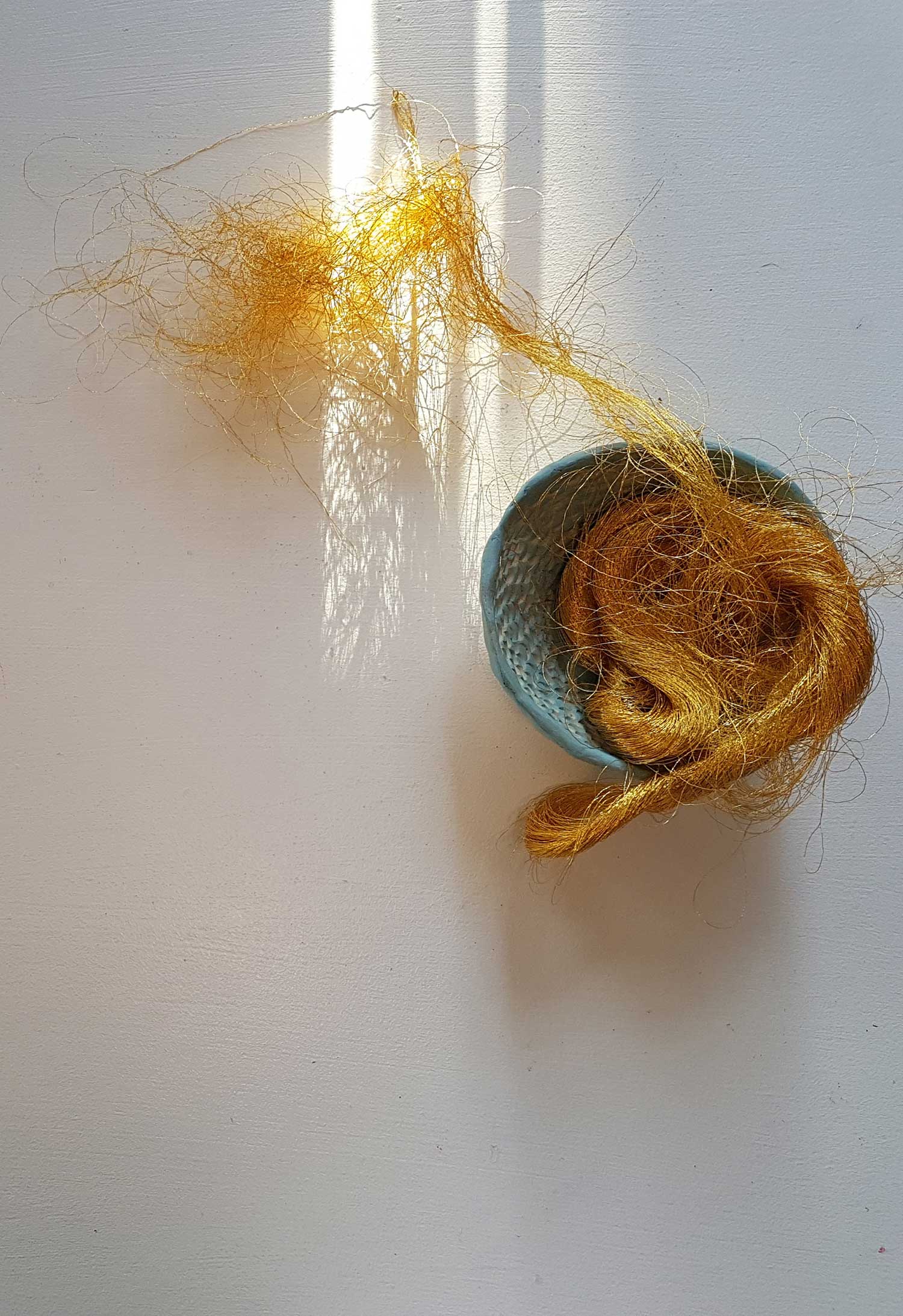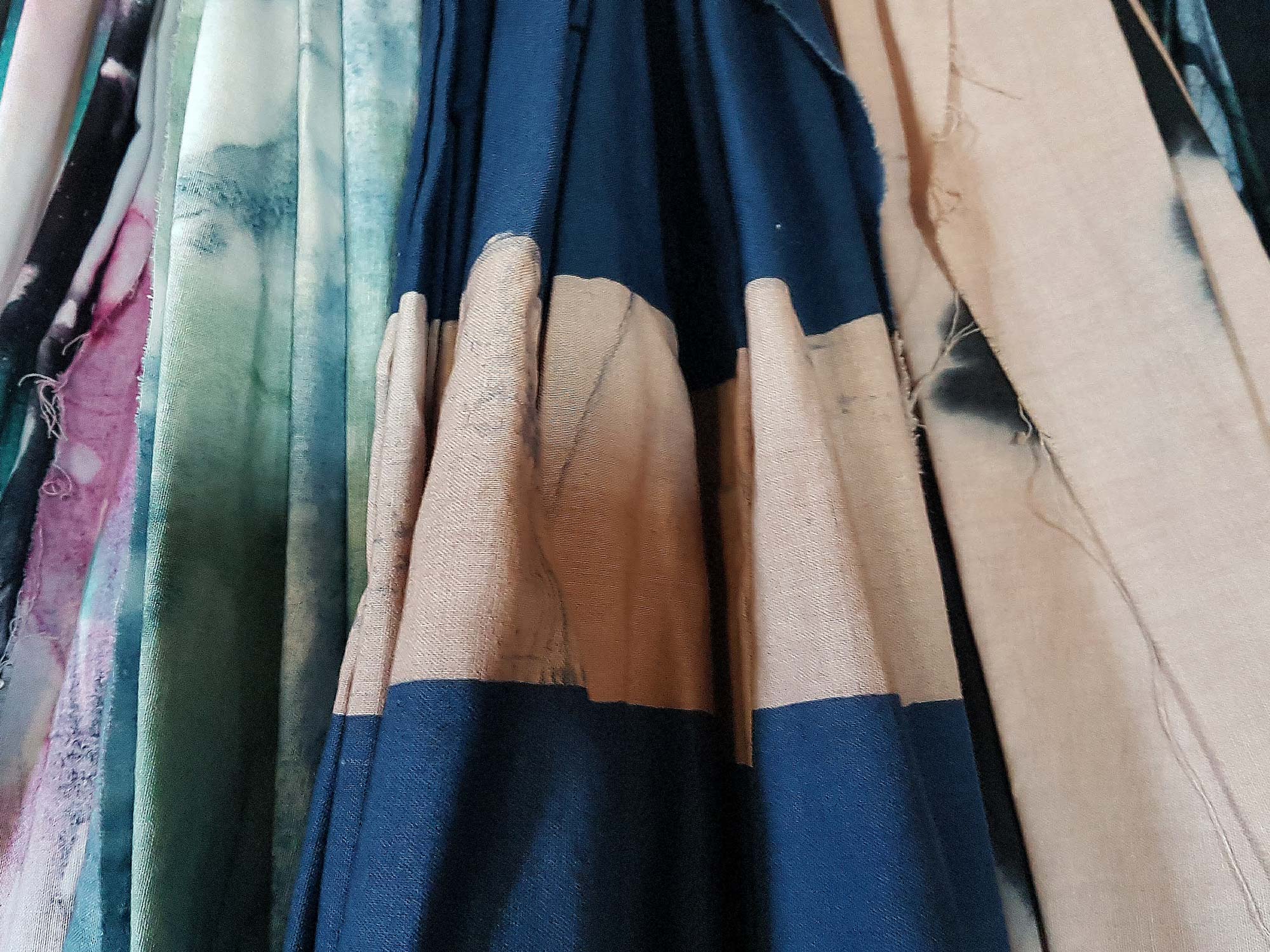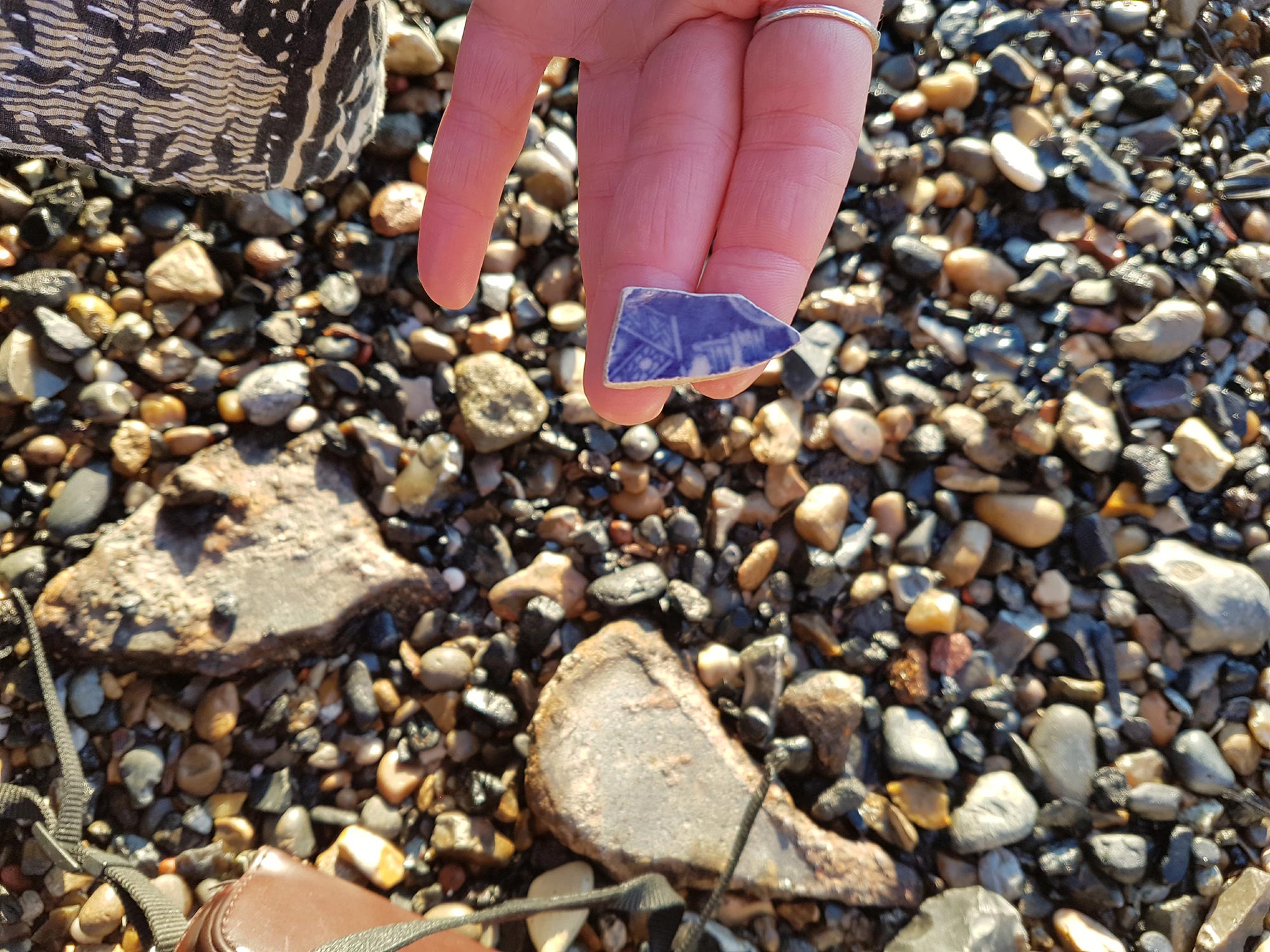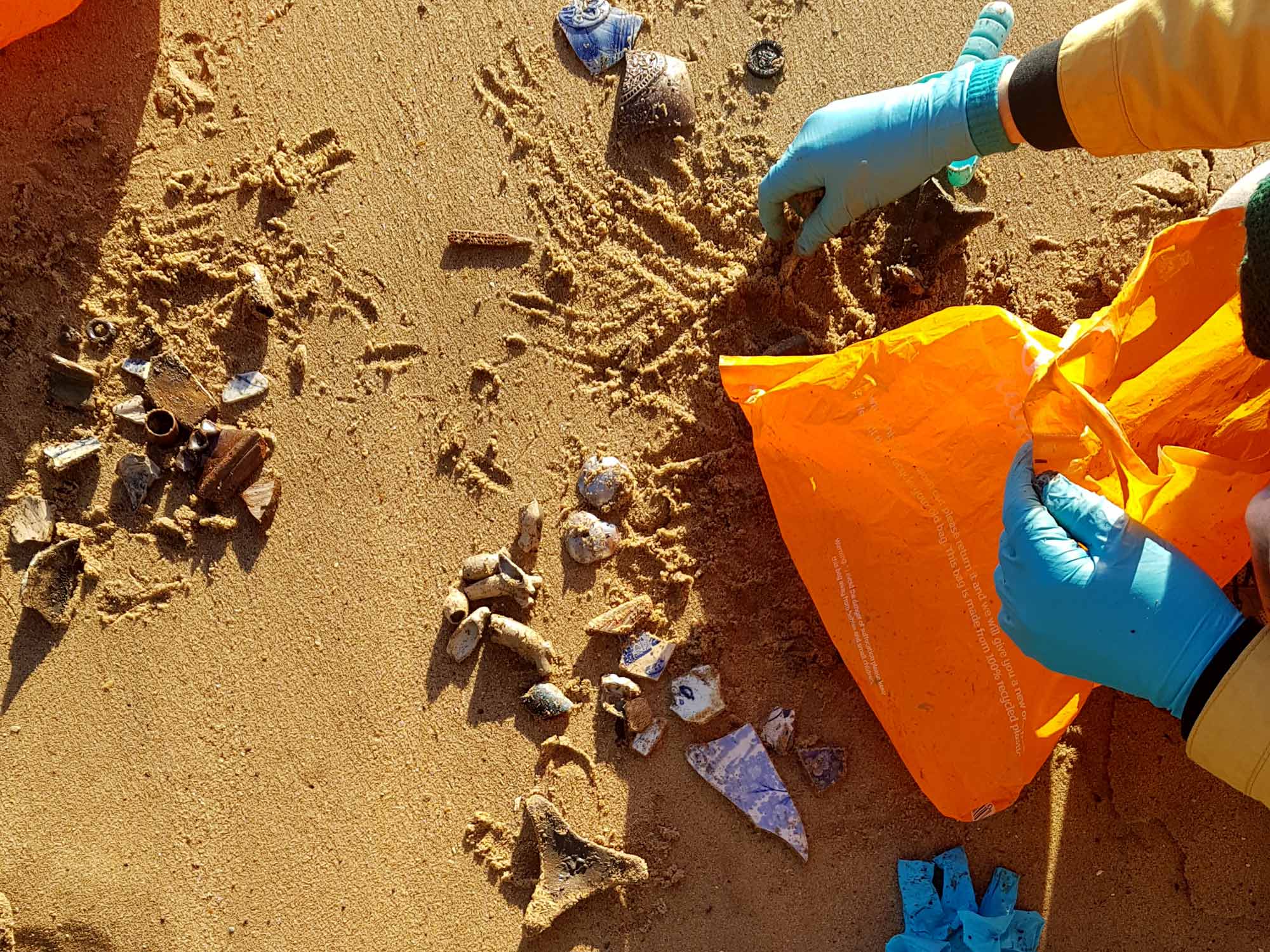‘People own their stories. They are wearing them. It’s their second skin.’

Cultural futurist Annegret Affolderbach on encountering cultures and uncovering truths along the Thames’ foreshore
6 minute read / Rosanna Vitiello
Spend a morning with Annegret and your view of the world turns inside out. At low tide, among sand and searing blue skies, we meet to mudlark along the River Thames, as she unravels new perspectives on a place we thought we knew so well. Picking through and knitting together forgotten pieces of London’s heritage is a funny old game for a futurist, but therein lies Annegret's talent: encountering and drawing together strands of cultures and places to create something new.
Her relationship to place is nomadic. Growing up in the GDR, a country that no longer exists, she’s since set her sights globally and is best known for her work in Africa, as well as creating experience workshops in London. While she’s worn various hats it’s her view on the world — not her job title — that’s important. Celebrated by the British Council as the founder of sustainable fashion brand Choolips, she established this flourishing business in Ghana, and is now embarking on a trip through 11 African countries to research social and cultural trends. The projects she instigates create powerful change in places through seemingly soft means, and that’s why we’re talking. Her work strengthens ties between cultures, weaving sounds, sights and discoveries into and objects and experiences. Simply, she creates things that truly speak of a place.
Let’s talk about your background – how has that influenced the way you see the world?
I grew up in East Germany until I was 13, when the wall came down. When I was young, the world outside looked very different. I had a sense that I might never see it. As I grew older, there was a looming sense that I wouldn't be able to study certain things and I'd resigned myself to being either a ballet dancer or a carpenter. In some ways what I do now has both of those.
The place I grew up in was bleak and we didn't have much choice about our lives or our consumer experience. So I've always had this strong sense of fairness and the need to have the truth. In some ways, I discover the truth, but as a designer I do it with life and beauty.
Another integral part of how I experience life is that I'm very shortsighted. I wore thick glasses, which I wasn't allowed to wear when I did ballet as a child. I had to sense space around me and count steps on stage. So the sensory perception that I had to develop was unusual. I was creating a sensory language to understand the space.
What drew you to start working in Africa?
I lived in a house which was one of the oldest Georgian properties in Whitechapel and which belonged to a Captain. He was part of all the trade that would come to the ports and into the docks. The area was known for linen, cotton and silk production and it led me right into the heart of what I’m passionate about — textiles and textile traditions. There was something about the storytelling in African textiles that I loved.
How do they tell a story?
It’s different in every country and from technique to technique. A lot of it is through symbols and choices of colours that mean particular things, through the type of cloth and how it’s woven. There’s also a hierarchy of prestige and meaning.
When I started my business, the emphasis was on creating something that would be socially impactful for the communities that I would work with. I ended up in West Africa and realised there’s so much in building a relationship with one group of people — building the layers in the depth of one place. That’s why I’ve stayed with Ghana and the textile technique of batik that has been practiced there for such a long time.
—
As a designer I’ve gotten to a point where the storytelling itself and the passing on of the experiences is what’s important. That’s what really creates change.
—
I now look at the business as my first big social artwork. What’s important about the business model is how people adopt it and make it their own. I’ve realised that I have become a mediator, a connector of cultures. I’m not just a cultural nomad but also a cultural futurist.
What do you think it requires to build a culture in a place?
As designers or innovators we set trends and they change perceptions overnight. That’s very powerful in building culture. It’s also important that people are allowed to keep it private. They need to feel safe with it so that it can actually grow.
Let’s go back to inspiration, because you're just embarking on an important trip around East and South Africa for 90 days. Can you tell us about that?
The idea is to travel to 11 African countries and 13 major cities and to research, document and experience the layers of these places and the people. My focus is on discovering different patterns and ways of life.
How do you go about discovering places on a trip like that?
It's very intuitive. I let places and people speak to me.
—
Traditionally discovery is a sort of ‘go, discover and extract’, but for me, it's about bringing an understanding to a place that's very respectful — always with the viewpoint of what can I bring, what beneficial elements could I add to give an extra nudge, to make things excel and grow locally?
—
When you're building culture as an artist, designer or from a political point of view, that element of observation and then communicating it for the benefit of the greater good is essential.
At some point, of course, you go away again. How do you pass on that spark?
The common element is education. You learn something, and you unlearn what you know. That's the flame that stories pass on. It's a simple but tough thing to do, because it means uncertainty.
It seems a lot of what you do is in contrast to the way you grew up, right?
It's pointless to go around truth because it will always surface. This is so important for me because I grew up in a country where our truth was diverted. We lived in a place we knew was completely fraudulent, but we carried on knowing that the truth we were sold was a non-truth. It's surreal to me now.
David Adjaye, a friend of mine, asked me: what do you want to do with this East German history? I didn’t think I needed to do anything but he made me realise the value of it. I’m using the qualities I’ve drawn out of that realisation.
It seems that you do love to work with heritage as well as looking at trends.
That has a lot to do with the fact that I learned history twice. I learned it from the East German point of view, then I relearned it from the West German point of view. This is where the quest for truth comes in. We make this story up, or at least our vantage points.
With ideas about belonging and vantage points on history lingering in our minds, Annegret takes us mudlarking on the Thames…
What’s so special about the Thames Foreshore?
It's the idea of seeing history, and being in a place in London that looks different every day, because of the tide and its connection to the sea. There aren't many tidal rivers in the world. People rarely talk about the history of the river, yet it’s the most magic place.
How do you look at a place when you first arrive there to understand the atmosphere?
I come at it with an open heart and see what pulls me in. This place here gives me that tenfold. I know places that most people don't, because I walk around wherever I am in order to get a sense for the place, a feeling for it.
Is there a way of formalising this intuition for places?
There’s a character trait of fundamental curiosity. Also, I feel I'm part of it. I belong here.
Normally, I carry the feeling of home inside me. I know I can create a certain feeling like that anywhere in the world. But this place does that for me – there is something about it that's bigger than me. I bring it back down to water. What is that connection that we have with water? On the trip I’ll create interviews across those African countries, documenting the relationship people have with one of the biggest resources in our world. It’s us.













